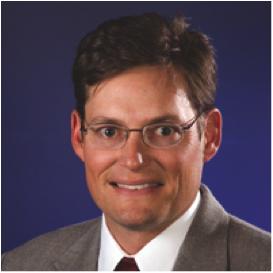
David Teter from LANL
A new high-performance computing initiative announced this week by the U.S. Department of Energy will help U.S. industry accelerate the development of new or improved materials for use in severe environments. Los Alamos National Laboratory, with a strong history in the materials science field, will be taking an active role in the initiative.
Understanding and predicting material performance under extreme environments is a foundational capability at Los Alamos,” said David Teter, Materials Science and Technology division leader at Los Alamos. “We are well suited to apply our extensive materials capabilities and our high-performance computing resources to industrial challenges in extreme environment materials, as this program will better help U.S. industry compete in a global market.”
The HPC4Mtls initiative will initially focus on challenges facing industry as they work to develop new or improved materials that can sustain extreme conditions—including extreme pressure, radiation, and temperature, corrosion, chemical environment, vibration, fatigue, or stress states. It will focus on developing improved lightweight material technologies, as well. The program aims to enable a step change in the cost, development time, and performance of materials in severe environments and save millions of dollars in fuel and maintenance across sectors. These material advancements will also increase U.S. competitiveness in the global marketplace.
The High-Performance Computing for Materials Program will provide opportunities for our industry partners to access the high-performance computing capabilities and expertise of DOE’s national labs as they work to create and improve technologies that combat extreme conditions,” said Secretary of Energy Rick Perry. “This initiative combines two, crucial elements of the Administration’s mission at DOE – advances in high-performance computing and the improved transition of energy technologies to market.”
 Through HPC4Mtls, industry will be able to solve common materials issues, discover new or improved materials and structures, and enhance their products and processes using the labs’ world-class computational resources and capabilities. These capabilities include:
Through HPC4Mtls, industry will be able to solve common materials issues, discover new or improved materials and structures, and enhance their products and processes using the labs’ world-class computational resources and capabilities. These capabilities include:
Access to HPC systems, including five of the world’s ten fastest computers
- Higher-fidelity simulations to augment products or processes
- Prediction of material behavior in specific severe environments
- Modeling of missing physical phenomena to enable more realistic simulations
- Development of more complex models to capture interactions between physical phenomena
- Access to expertise in computational fluid dynamics, thermodynamics, kinetics, materials modeling, and additive manufacturing
Companies will be selected to participate in the initiative through an open, two-stage, competitive process and will contribute at least 20 percent of project costs. DOE will hold a closed-press workshop on October 12, 2017 in Pittsburgh, PA to provide more information on the program and engage U.S.-based companies, industry, universities, and government stakeholders.
Sponsored by DOE’s Office of Fossil Energy, the High Performance Computing for Materials (HPC4Mtls) Program is part of the larger HPC4 Energy Innovation Initiative, a Department-wide effort comprised of the Office of Fossil Energy, the Office of Energy Efficiency and Renewable Energy, and the Office of Nuclear Energy. Lawrence Livermore National Laboratory, Los Alamos National Laboratory, Oak Ridge National Laboratory, and the National Energy Technology Laboratory serve as the principal leads on this initiative, which could ultimately lower emissions, reduce fuel and maintenance costs across the economy, and save millions of dollars.



